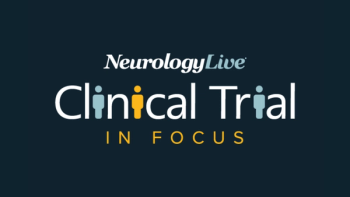
Myasthenia Gravis Medication Nipocalimab Outperforms FcRn Blockers in Indirect Comparison Analysis
Indirect treatment comparisons showed significantly greater or statistically higher improvements in MG-ADL scores with nipocalimab versus other FcRn blockers over 24 weeks.
Newly presented data from an indirect treatment comparison of the phase 3 Vivacity-MG3 study (NCT04951622) at the
In the analysis, nipocalimab showed a comparable onset of symptom relief at 1-week and displayed greater or statistically significant improvement in Myasthenia Gravis-Activities of Daily Living (MG-ADL) scores when compared with published phase 3 data of other marketed FcRn blockers at different time points up to 24 weeks on treatment. Researchers reported that these findings were consistent across multiple indirect treatment comparison approaches.
“At Johnson & Johnson, we recognise that for people living with gMG, the goal isn’t just temporary relief, but rather sustained disease control. This analysis provides additional insights into the profile of nipocalimab and highlights its potential as a treatment option for appropriate patients aged 12 and older living with gMG,”
In unanchored population-adjusted indirect comparison, researchers reported that nipocalimab versus 1 treatment revealed a mean MG-ADL score difference of -2.36 (95% CI, -3.56 to -1.16; P = .001] at 8 weeks, which continued trending up to 24 weeks (P <.05). For another comparator, results at 10 weeks showed that nipocalimab displayed a mean difference of -2.38 at 7mg/kg (95% CI, -3.57 to -1.18; P <.001) and a mean difference of -3.14 with 10mg/kg (95% CI, 4.15 to -2.14; P <.001), continuing this trend up to 14 weeks (P <.001).
As for the placebo-controlled indirect comparison, MG-ADL change from baseline (CFB) was greater -1.24 points at 8 weeks versus 1 treatment comparator (95% CI, -2.78 to 0.30), by -1.13 (95% CI, -2.77 to 0.50) at 18 weeks, by -1.44 (95% CI, -3.21 to -0.33) at 20 weeks, by -1.79 (95% CI, -4.16 to 0.59) at 22 weeks, and by -2.89 (95% CI, -5.67 to -0.12) at 24 weeks. Additionally, treatment with nipocalimab resulted in a greater MG-ADL CFB versus a comparator dose at 10 weeks (mean CFB =-1.19; 95% CI, 2.75-0.37), 12 weeks (mean CFB = -1.41; 95% CI, -2.94 to 0.12) and 14 weeks (mean CFB = -1.01; 95% CI, -2.51 to 0.49). Researchers noted similar trends observed for nipocalimab versus a different comparator dose at 10 weeks (mean CFB = -2.16; 95% CI, -3.58 to -0.73), 12 weeks (mean CFB = -1.99; 95% CI, -3.53 to -0.45) and 14 weeks (mean CFB = -1.12; 95% CI, -2.55 to 0.31).
READ MORE:
“These analyses provide useful population-adjusted indirect comparative data and add to the body of evidence supporting the use of nipocalimab for the treatment of gMG for certain patients,” lead author Saiju Jacob, MD, professor in the Department of Immunology and Immunotherapy at University of Birmingham and consultant neurologist at University Hospitals Birmingham, said in a statement.1 “The significantly greater mean improvements on MG-ADL scores with nipocalimab reflect important new evidence on the ongoing need for sustained disease control in a chronic condition like gMG.”
The
All told, data from the study showed a 4.70-point improvement in MG-ADL score, the primary end point, for those on nipocalimab. In comparison, this was significantly more than the 3.25-point improvement from baseline observed in the placebo plus SOC group over weeks 22, 23, and 24 (P = .002). Additionally, those on nipocalimab plus SOC demonstrated a significant improvement in Quantitative Myasthenia Gravis (QMG) score, a secondary end point, over placebo through weeks 22 and 24 (P <.001). These findings were also coupled with enhancements in strength and function of different muscle groups.
“gMG is characterised by severe muscle weakness and difficulties in speech and swallowing, and so improved control of gMG could mean the difference between a person facing serious difficulty with swallowing and being able to enjoy a meal on their own,” Mark Graham, senior director, Therapeutic Area Head, Immunology, Johnson & Johnson Innovative Medicine EMEA, said in a statement.1 “The encouraging results from the indirect treatment comparison presented at this year's EAN reinforce J&J's commitment to broadening the treatment landscape and improving outcomes for people living with this disease.”
REFERENCES
1. Nipocalimab showed greater sustained disease control versus approved FcRn blockers for generalised myasthenia gravis (gMG) at multiple timepoints over 24 weeks in newly published indirect treatment comparison (ITC). News Release. Johnson & Johnson. Published June 23, 2025. Accessed July 8, 2025. https://innovativemedicine.jnj.com/emea/newsroom/nipocalimab-showed-greater-sustained-disease-control-versus-approved-fcrn-blockers-for-generalised-myasthenia-gravis-gmg-at-multiple-timepoints-over-24-weeks-in-newly-published-indirect-treatment-comparison-itc
2. Jacob S, et al. Comparative Efficacy of Nipocalimab and Other FcRn Blocker Therapies in Generalized Myasthenia Gravis. Oral ePresentation at 11th European Academy of Neurology (EAN) Congress. EPR-301
3. Johnson & Johnson receives FDA approval for IMAAVY™ (nipocalimab-aahu), a new FcRn blocker offering long-lasting disease control in the broadest population of people living with generalized myasthenia gravis (gMG). News release. Johnson & Johnson. April 30, 2025. Accessed July 8, 2025. https://www.prnewswire.com/news-releases/johnson--johnson-receives-fda-approval-for-imaavy-nipocalimab-aahu-a-new-fcrn-blocker-offering-long-lasting-disease-control-in-the-broadest-population-of-people-living-with-generalized-myasthenia-gravis-gmg-302442650.html
Newsletter
Keep your finger on the pulse of neurology—subscribe to NeurologyLive for expert interviews, new data, and breakthrough treatment updates.




































